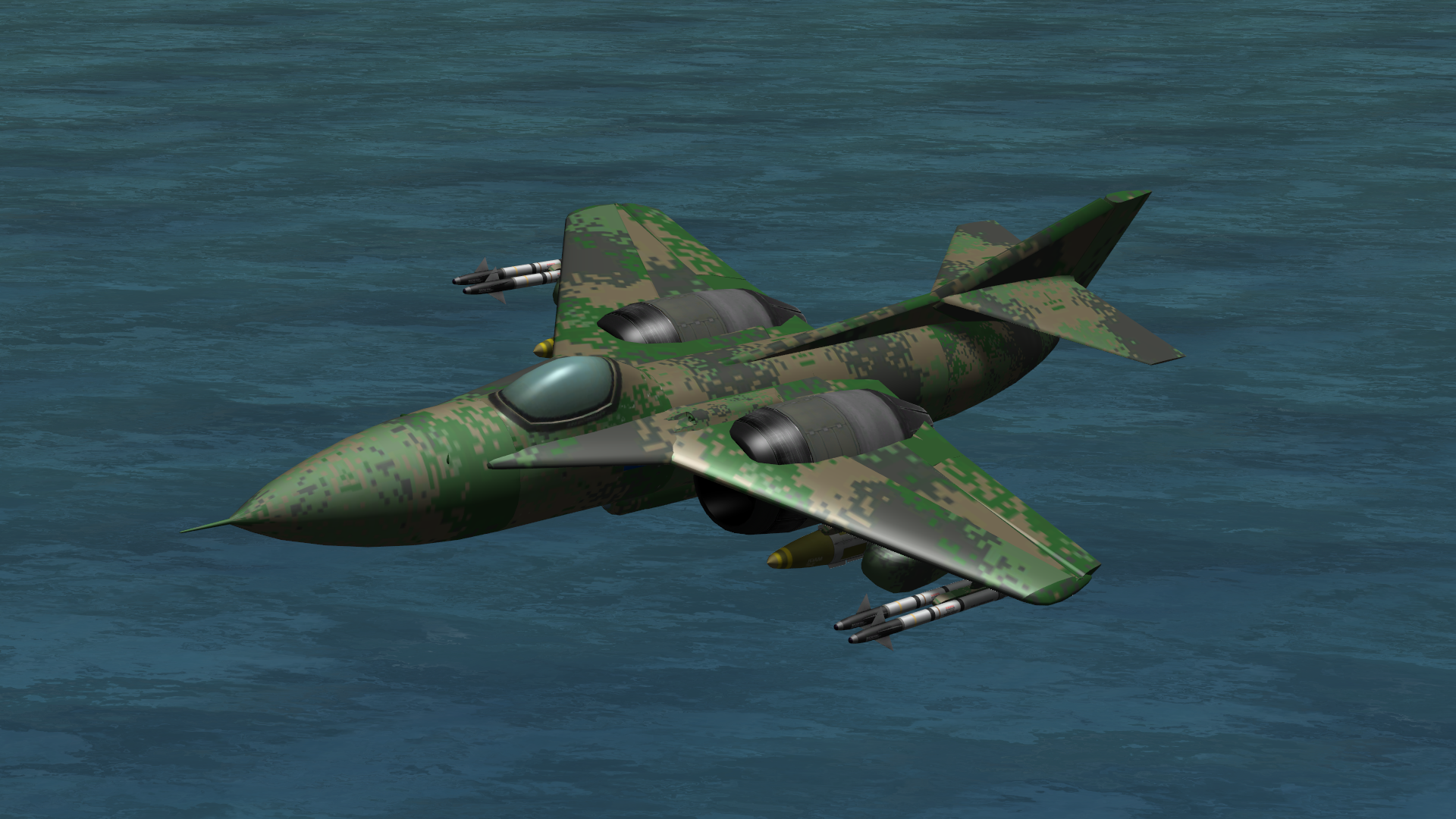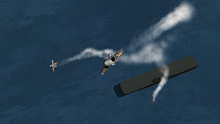VA-7 Tiberius
|
VA-7 Tiberius
|
|||||
|---|---|---|---|---|---|
 |
|||||
| Role | Strike Fighter | ||||
| National Origin | {{{origin}}} | ||||
| Production History | |||||
| Service History | |||||
| Used By | Vocavium Venmous | ||||
The Bustard VA-7 TIberius is a twin-engine strike fighter developed for the Vocavian Air Arm. Designed to operate from the confines of an aircraft carrier's flight deck, the Tiberius is capable of vertical and/or short take-off and landing (V/STOL) and is one of the few operational VTOL fighters currently in service around the world. Manufactured by the Bustard Aircraft Company, the Tiberius was designed to attack hostile aircraft marauding it's local carrier and fleet, as well as engage surface targets.
It first flew in 2082 after the Thunderbird Class of carriers had entered service, which it was intended to operate from, though the class was retired before the Tiberius entered service. The test pilot, Barbles Kerman, was very impressed by the aircraft, citing it's enormous power and sensitive controls in his appraisal of the airframe. Despite it's straight-line speed and power, it excelled in simulated dogfights against contemporary Vocavian dedicated fighter designs, achieving a 3:1 kill ratio in simulations. As well as a potent air-superiority potential, the Tiberius performs enviably in its primary role as a ground attacker, delivering medium loads of ordnance at very high speed and with deadly precision.
Development
With the Vocavian Navy designing and producing carriers at a remarkable rate, an aircraft was requested that could fill the role of fleet defender and strike fighter, to complement the many designs that were being launched. Bustard submitted a design for a mach 3 capable strike fighter that incorporated swivelling engine nacelles to achieve VTOL capabilities. The design was selected with minor adjustments, and was hurried into production.
The first prototype flew in 2082 with Barbles Kerman at the controls. Upon flying the prototype, Barbles would later remark: "Flying the Tiberius is like nothing else. She's not your agile fighter or high-tech precision scalpel of an attacker. Instead, she's a hot rod. You can take off vertically with no problems whatsoever, roll on the throttle, flip a switch and disappear. The feeling of raw power you get in this machine takes your breath away. You feel untouchable." Despite a high wing loading, the Tiberius presented itself as a competent dogfighter owed in large part to its sensitive controls and all-moving tailplane.
Design
The Tiberius' main feature is its ability to takeoff and land vertically, by use of rotating engine nacelles under the wings. This capability offers the aircraft enormous tactical flexibility, allowing it to takeoff with ease from the deck of a carrier, or indeed from any strategic position without the need for a runway. Furthermore, the jets can be angled down whilst in combat, tightening the aircraft's turning radius substantially and offering supermanoeuvrability.
The aircraft has hardpoints for air-to-air missiles as well as air-to-ground missiles and bombs. The loadout depends on the mission currently being undertaken, though it is often equipped with four AIM-9 Sidewinders and two Mk83 JDAMs.
Service History
2082 - Present
Following its successful trials, the Vocavian Air Force ordered ~200 aircraft which entered active service in 2083.
In 2085, Vocavium declared war on Medwedia and initiated Operation Resounding Strike, deploying a small task force to Medwedia to assist Grestin in the conflict. Carried on-board the VN Matterhorn were 18 VA-7's, 10 of which were outfitted for air-to-air combat, and the remaining 8 outfitted for use as attack aircraft. During the battle for air superiority, 5 VA-7's were lost to Medwedian Z-80's.
Specifications
General Characteristics
- Crew: 1
- Length: 12 m
- Wingspan: 8.1 m
- Height: 4.5 m
- Empty Weight: 9,242 kg
- Loaded Weight: 14,902 kg
Performance
- Maximum Speed: Mach 2.2 (Mach 3.2 with Reheat)
- Range: 2,100 km
- Thrust/Weight: >1.2
Armament
- Guns: 1x 20mm Vulcan
- 4x AIM-9 Sidewinder
- 2x Mk83 JDAM
